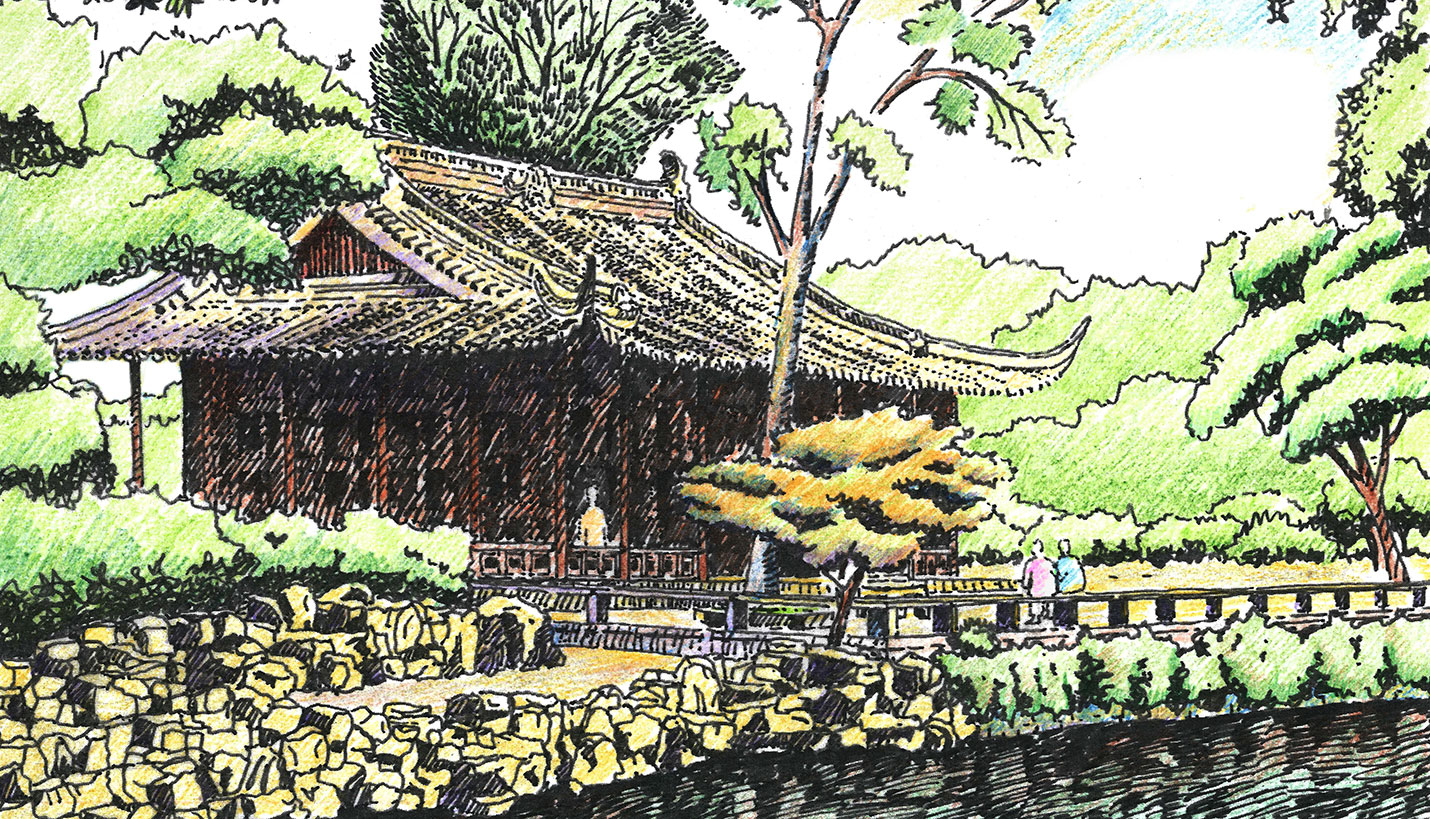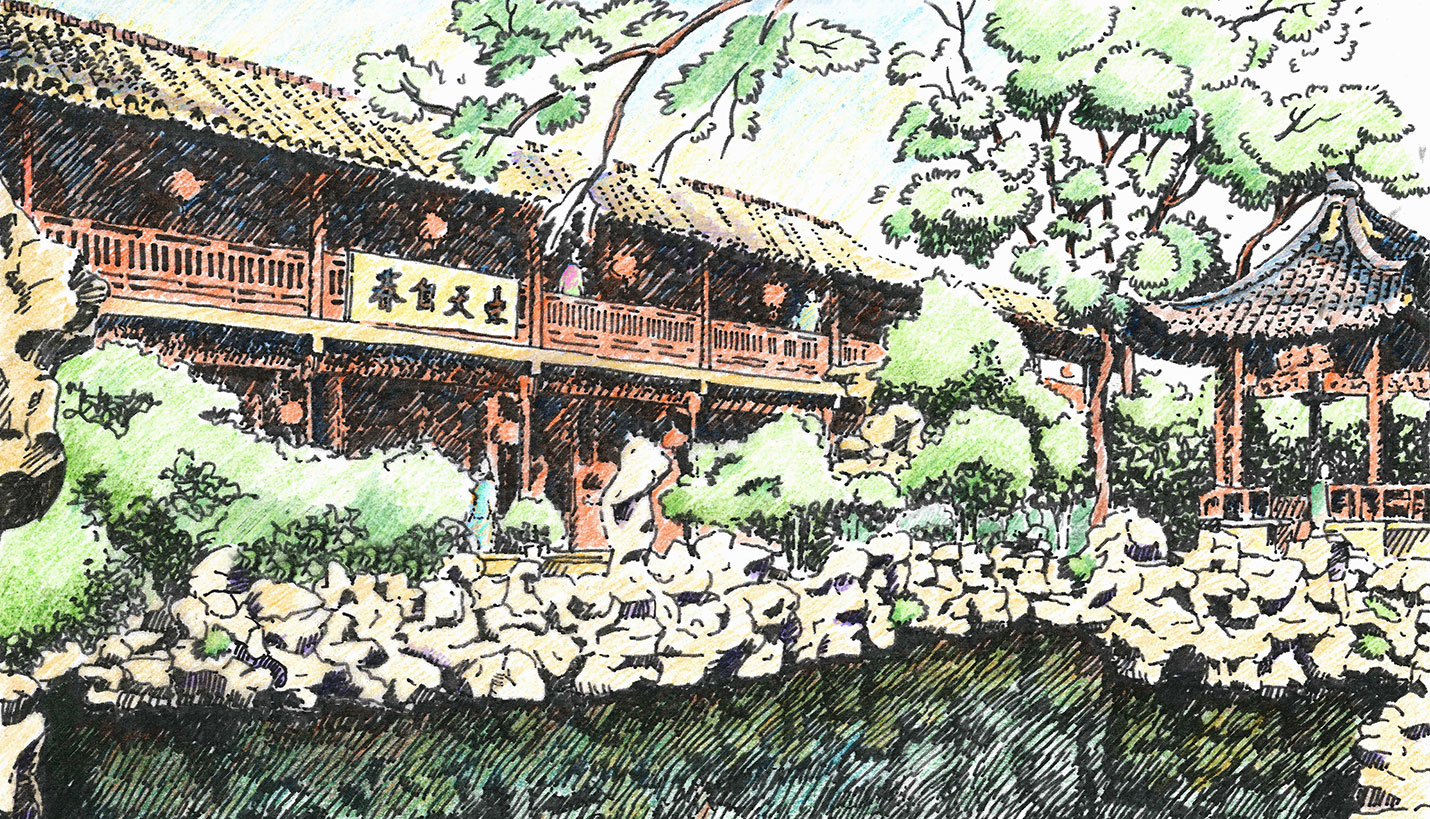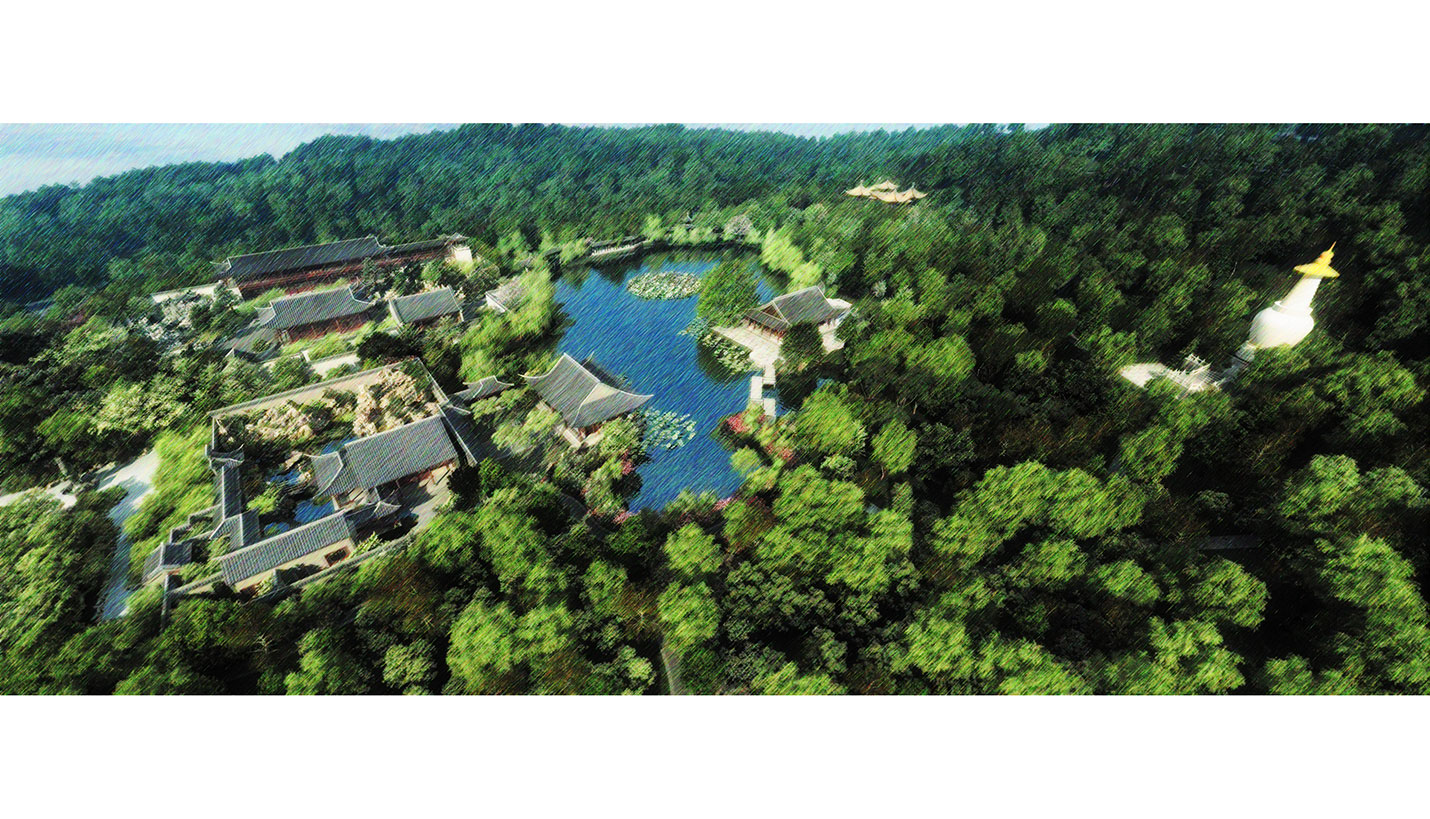Sleights of Hand at the National China Garden
Detailed, layered and choreographed, traditional Chinese gardens are rich with symbolism. An expression of the Taoist belief in the unity of heaven and humanity, Chinese gardens artfully weave architecture and landscape to create a narrative that celebrates the ephemeral beauty of nature. Through their four main elements—architecture, mountains, water and plants—Chinese gardens express ancient wisdom by extoling the virtues intrinsic to each. Pavilions, towers, temples and bridges provide shelter, frame views, and illustrate man’s interdependency with nature. Mountains or rock formations anchor the gardens and symbolize stability and endurance. Ponds, lakes or streams express lightness, impermanence and infinity. Each plant has a unique meaning, and its location in the garden tells a story.
The National China Garden at the United States National Arboretum in Washington, D.C. is similarly symbolic. An expression of friendship and collaboration between the United States and China, the former donated the 12-acre site and the latter will fund its design and construction. In collaboration with designers and artisans in China, Page is providing architecture and engineering services for what will be the finest example of a Chinese garden in this country owing to its scale, the diverse range of garden scenes and plantings, and the historical accuracy of the replicas to the original gardens, which date to the Qing Dynasty (1644-1912). We were pleased to see the recent article in The Washington Post celebrating the garden’s ambitious design. In response, we offer a glimpse into how Page created the illusion of 17th and 18th century China despite 21st century health, safety and access requirements.
As architects on the project, Page collaborated with peers in China to design near perfect replicas of two dozen garden structures, while integrating modern building systems essential to the Arboretum’s programming and required for code and ADA compliance. “Through daily collaboration with scholars and garden experts in China, we achieved a design that respects and preserves the integrity of these buildings as historic precedents with updates to serve their newly public functions,” notes Thomas McCarthy, Page Senior Principal and principal-in-charge of the project.
The design team went to great lengths to conceal all traces of modern equipment or materials to preserve the highly immersive experience. The buildings utilize traditional structure and joinery, so that visitors can see and appreciate their centuries old heavy timber construction assemblies. “Through in-depth analysis of joinery details we were able to prove that historic construction methods would meet modern code requirements. Overcoming this obstacle was central to preserving design integrity of the original structures,” notes McCarthy.
In the Embracing Mountain Pavilion, the garden’s main program space, HVAC systems are hidden in the ceiling structure and integrated into screen details, while an elevator required for universal access tucks around a corner. In another instance, achieving a fully accessible design meant eliminating access to one pavilion altogether. Located atop a 30’ rockery, there was no way to provide universal access without compromising the Embracing Mountain Pavilion’s iconic design, but its presence in the garden is essential to “borrowed views” that are emblematic of Chinese gardens. Instead of occupied space, the pavilion will serve as a folly to be appreciated by all from below.
Although located just a few miles from Page’s office in Washington D.C., designing the garden’s structures called for the same skills the design team honed on projects for the U.S. Department of State: cultural sensitivity, the ability to organize large and diverse groups and an awareness of the symbolic value of different design elements. Page is honored to play a supporting role in bringing a local project with national significance from vision to reality.
06/27/2017
People
Related Posts
- National China Garden
- Urban Design Projects in China Win Texas ASLA Design Awards
- Creative Thinking in Complex Environments: Conversations in the Garden
- What's Hot In Multifamily Building and Design
- Serving the Brave: Austin VA Outpatient Clinic
- Austin VA Clinic: Role in Veterans' Mental Health in Texas
- Seeing The World Through An Architect's Eyes












